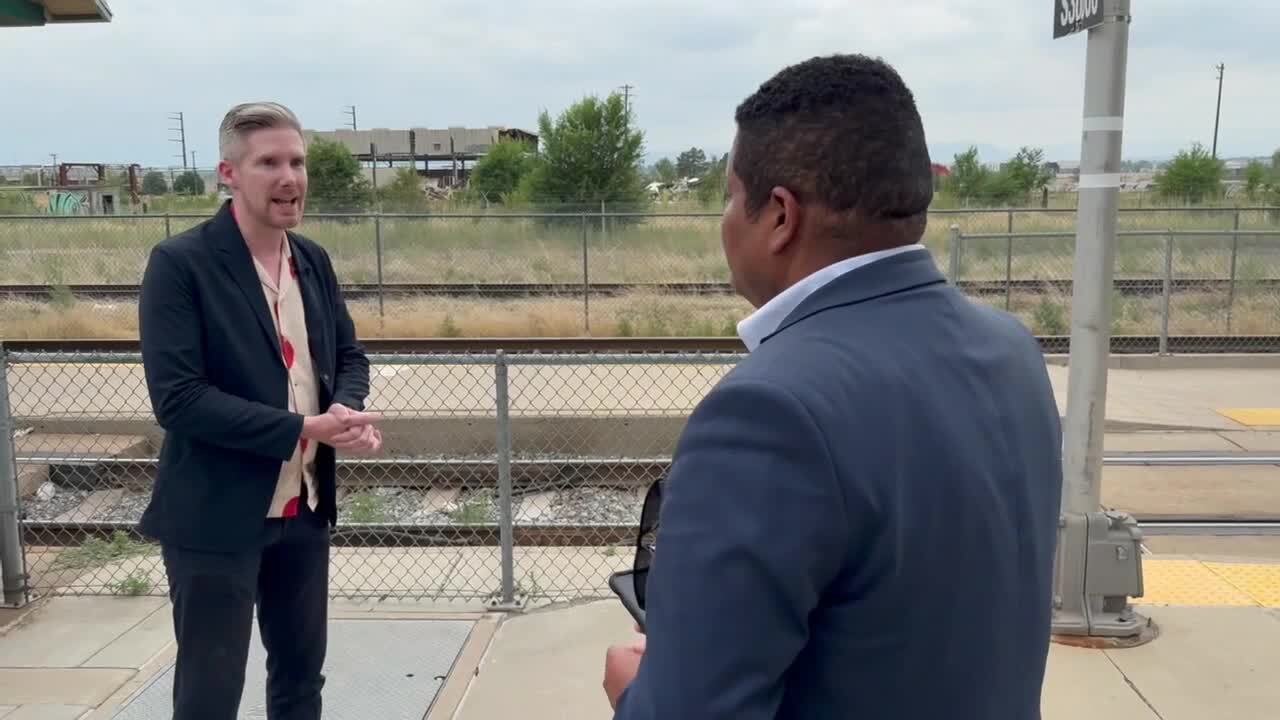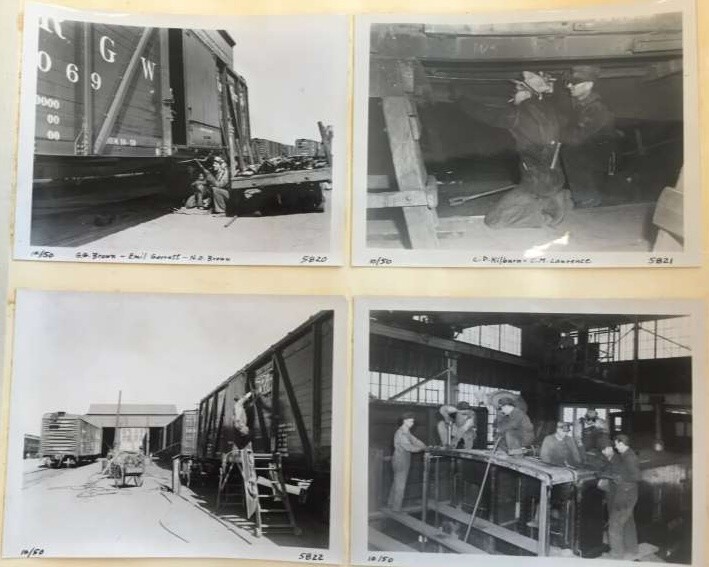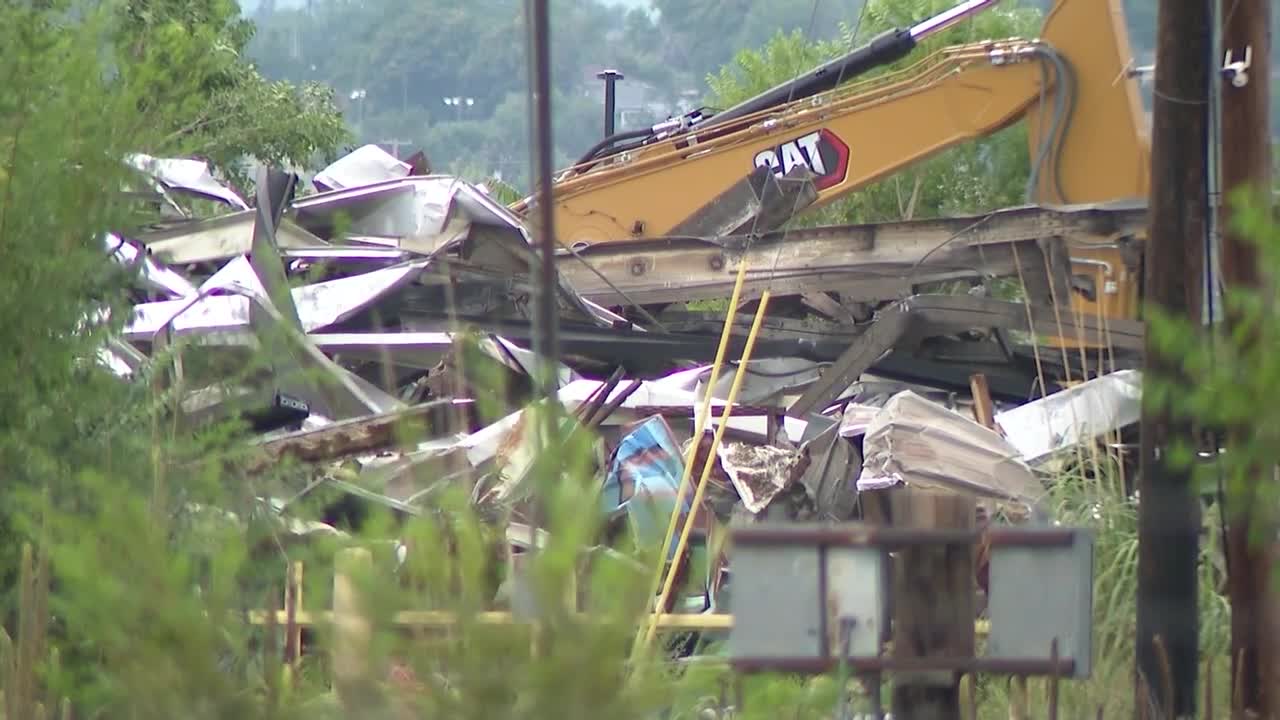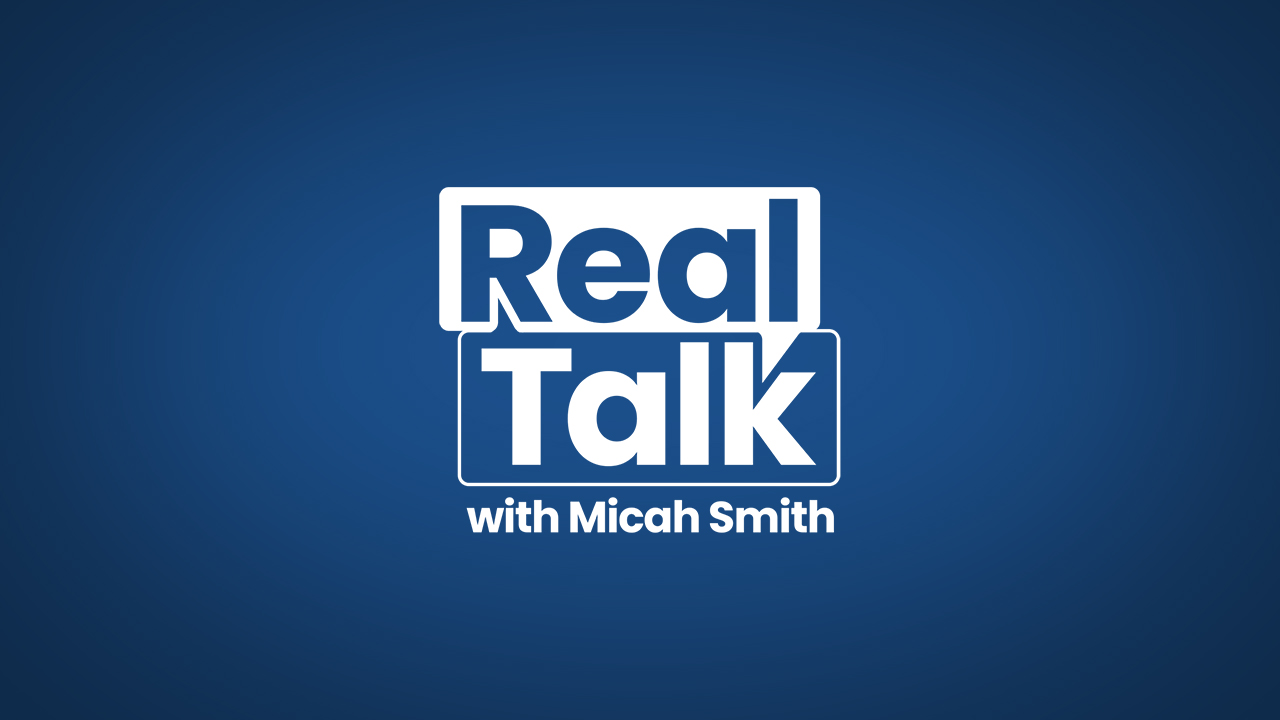DENVER — It was once a key part of Denver’s rail industry, but now, parts of Burnham Yard have been torn down.
Some community members are demanding accountability, telling Denver7 these structures were historically significant and the demolition came without warning.
John Deffenbaugh, the president and CEO of Historic Denver, said buildings are a good way to learn about history.
“Buildings are physical reminders of our history," he said. "They ground us, they remind us of what occurred before us. They remind us of the lessons of history."

Deffenbaugh said a big chunk of Denver’s history has been reduced to rubble, calling it an "act of cultural vandalism."
This weekend, the Colorado Department of Transportation (CDOT) began demolishing several buildings at Burnham Yard.
“My reaction was huge sadness,” Deffenbaugh told Denver7.
He said the buildings that were demolished were used by women and Black workers during the 1940s and 1950s.
“This was a really special site that allowed people who would not normally have the opportunity to work in an industrial setting,” Deffenbaugh explained. “And there were still buildings that told that story.”

Deffenbaugh said the structures that were demolished include the Women’s Locker Room, which was built to accommodate women who took on jobs that were typically held by men during World War II. The Roundhouse Foreman’s Office, which included washrooms and lockers for Black workers, was also demolished, along with the Steel Car Shop and the Testing Laboratory.
“It's not just the buildings that have been lost here, but the stories being lost as well,” Deffenbaugh said.
David Riggs with the La Alma Lincoln Park Neighborhood Association said the demolition of the buildings was disrespectful.
“The neighborhood association had no warning that these historic buildings were going to be torn down. The demolition of these historic buildings shows enormous disrespect for the history of our neighborhood," Riggs said. "Many of our neighbors had family members who worked at Burnham Yard. This action is an insult to the history of the community and disrespectful of the influence that the railroads had on the growth of Denver.”

CDOT bought the property for $50 million in 2021, with the hope that it could be used to help expand Interstate 25 and meet other critical transportation needs. Those plans didn’t pan out, and now the Colorado Transportation Investment Office (CTIO), an independent, government-owned business within CDOT, is cleaning up the property so it can be sold someday.
“The Colorado Transportation Investment Office (CTIO) has long been preparing the Burnham Yard site for sale. The first step was to complete the track alignment study and acquire the Burnham Lead Line from Union Pacific, needed right away to ensure safe passage into the site. Now we are proceeding with additional site preparations including working through the historic preservation process and site cleanup,” CTIO said in a statement to Denver7. “We have worked with the State Historic Preservation Office and the Department of Personnel and Administration, which manages state properties, to clean up the Burnham Yard site in advance of any sale. This process includes mitigation of any hazardous materials, such as asbestos, but also demolition of structures. None of the buildings found to be historically eligible by the State Historic Preservation Office are a part of this cleanup effort, and we are committed to working through the historic eligibility process for those structures. The historic easements will remain on those structures after the sale of the property.”
While the buildings that were demolished weren’t deemed historically significant by the State Historic Preservation Office, Deffenbaugh said they are still historic to community members and deserved to be preserved.
“Just because a building is not on the state register doesn't make it unhistoric,” he said.

Denver Broncos
Broncos will build stadium outside of Denver 'over my dead body': Mayor Johnston
The demolition comes amid growing speculation that the Burnham Yard site could someday be home to a new Denver Broncos stadium. No plans for a new stadium have been announced.
“We continue to do due diligence as we evaluate the future of our stadium, exploring several potential options throughout the metro area, and no determinations have been made at this time,” said Patrick Smyth, the chief communications officer for the Denver Broncos Football Club.
According to Business Den, entities associated with the Broncos have been purchasing real estate near Burnham Yard.
“Our organization does not have any comment on the reported real estate transactions,” Smyth told Denver7.
The City and County of Denver plans to spend $140 million on road infrastructure improvements near Burnham Yard if voters approve the Vibrant Denver bond package this fall. City officials said the infrastructure repairs are long overdue, but Patrick Riley, the Vibrant Denver bond program manager, acknowledged to city council members last week that the Broncos could be a factor.
“It is impossible to ignore the Broncos as a thing in Denver, so telling you that there’s no weight there, or that there’s no consideration there, would be insulting to everybody at this table,” Riley said.
Meanwhile, Deffenbaugh and others who wanted to preserve the buildings said the opportunity to integrate them into a new development has been lost. They hope the remaining structures are preserved and incorporated into any future development.
“There is a really wonderful structure left, the Locomotive Shed, and we hope that's incorporated into a new development,” Deffenbaugh saud. “There are so many examples of sites across Denver and across the country where existing older buildings are incorporated into wonderful modern developments.”






